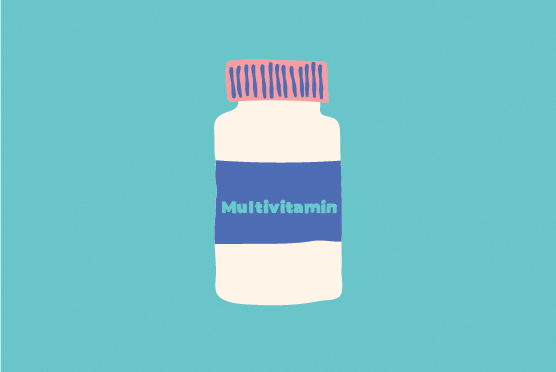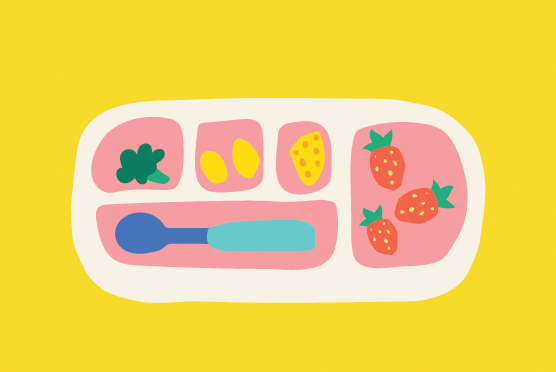Inside this article
- What are probiotics, and why are they important for children and babies?
- Why do children and babies need probiotics?
- What are antibiotics, and how do they affect children and babies?
- Why are probiotics recommended after your baby or child has a course of antibiotics?
- What evidence is there that probiotics are recommended to give to your children when they have taken antibiotics?
- When should parents give them to their children – at the start of the course or after?
- What forms of probiotics for which age groups – i.e., drops for babies/ gummies, etc.?
- Bottom line
What are probiotics, and why are they important for children and babies?
Probiotics, often known as “good” or “friendly” bacteria, are live microorganisms that help maintain a healthy digestive system. These beneficial bacteria naturally reside in our bodies, particularly in the gut, and are crucial for keeping our digestive tract balanced and healthy.
Think of your child’s body as a small ecosystem filled with trillions of bacteria, some helpful and some not so helpful. Probiotics are the good bacteria that help keep everything running smoothly in this tiny ecosystem. They help digest food properly, absorb essential nutrients, and even protect against bad bacteria that can lead to stomach upset or infections.
Children and babies can get probiotics from certain foods and supplements. Foods like yoghurt, kefir, and other fermented foods such as sauerkraut and kimchi are rich in probiotics. However, these foods may not always be suitable or appealing for young children and babies. In such cases, specially formulated probiotic supplements are designed for children and infants. Drops, powders, or chewable tablets can be a good alternative to ensure they are getting enough good bacteria.
Why do children and babies need probiotics?
Probiotics are often recommended for children and babies to help manage digestive issues such as bloating, diarrhoea, or constipation. They are also beneficial after a course of antibiotics. Antibiotics are powerful medicines used to treat infections caused by harmful bacteria. While they are effective in killing bad bacteria, antibiotics can also eliminate some of the good bacteria in the gut, disrupting the natural balance. Probiotics help replenish these beneficial bacteria, restoring balance in the digestive system and reducing the risk of antibiotic-associated diarrhoea.
It’s important to note that while probiotics are generally safe for most children and babies, it’s always best to consult a healthcare provider before starting any new supplement. Especially if your child has specific medical conditions or if you have any concerns.
What are antibiotics, and how do they affect children and babies?
Antibiotics are medications designed to fight bacterial infections by killing harmful bacteria or stopping them from growing. They are commonly prescribed to treat infections such as ear infections, strep throat, or urinary tract infections, which are common in children. However, antibiotics can also affect the good bacteria in a child’s gut.
When taking antibiotics, it is essential to follow the doctor’s instructions carefully, including completing the entire course of medication, even if the child feels better after a few days. Stopping antibiotics too soon can lead to some bacteria surviving and potentially becoming resistant, making future infections harder to treat.
Because of this, balancing the effects of antibiotics with probiotics can be particularly beneficial for children and babies, helping maintain a healthy gut environment and supporting their overall health.
Why are probiotics recommended after your baby or child has a course of antibiotics?
When children take antibiotics to treat bacterial infections, the medication can also kill off some of the “good” bacteria in the gut. This disruption in the balance of gut bacteria can lead to side effects, including diarrhoea, commonly referred to as antibiotic-associated diarrhoea (AAD).
Probiotics can help restore the balance of bacteria in the gut. They are recommended after a course of antibiotics to 1) restore the balance of the gut flora to help replenish the good bacteria that antibiotics might have destroyed. And 2) reduce the risk of diarrhoea. By maintaining a healthy balance of gut bacteria, probiotics can reduce the likelihood of diarrhoea and other gastrointestinal issues following antibiotic treatment.
What evidence is there that probiotics are recommended to give to your children when they have taken antibiotics?
Recent research, including a large meta-analysis, provides strong evidence for the benefits of giving probiotics to children following a course of antibiotics. One of the key findings is that probiotics can significantly reduce the risk of antibiotic-associated diarrhoea (AAD) in children when taken alongside antibiotics.
This is particularly true for certain probiotic strains, such as Lactobacillus rhamnosus and Saccharomyces boulardii, which have been shown to be especially effective in preventing AAD. The studies analysed also suggest that probiotics are generally safe for children, making them a viable option to minimise the side effects commonly associated with antibiotic use.
When should parents give them to their children – at the start of the course or after?
Based on the findings of the meta-analysis, it’s recommended to start giving probiotics to children as soon as they begin a course of antibiotics. This helps maintain a healthy balance of good bacteria in their gut from the very beginning. Which can prevent the loss of beneficial bacteria and reduce the risk of diarrhoea. It’s also advisable to continue giving probiotics throughout the entire course of antibiotics and even for a short time after finishing the antibiotics. This helps to ensure that the gut bacteria fully recover and remain balanced.
What forms of probiotics for which age groups – i.e., drops for babies/ gummies, etc.?
Probiotics are available in different forms suitable for various age groups, making it easier to incorporate them into a child’s diet. For babies, probiotics are often available as liquid drops or powders that can be easily mixed with milk or formula, ensuring they are gentle on a baby’s developing digestive system.
For toddlers and young children, probiotics may come in powder form. These can be mixed with food or drinks, or as chewable tablets and gummies. These are designed to be easy to consume and are often flavoured to be more appealing to young children. For older children who are able to swallow pills, probiotics are available in capsules or tablet forms. Gummies and chewable options are also popular with this age group because they are convenient and tasty.
Bottom line
Probiotics are beneficial for children who are taking antibiotics because they help restore the balance of gut bacteria, reducing the risk of diarrhoea and other digestive issues. The evidence supports starting probiotics at the beginning of the antibiotic course and continuing them throughout and shortly after. The form of probiotics chosen should be appropriate for the child’s age and ability to consume the product safely.









